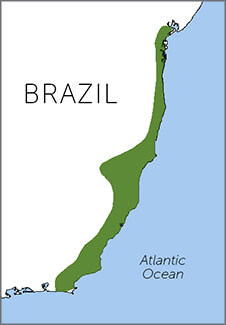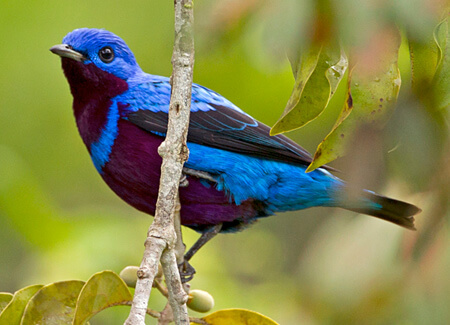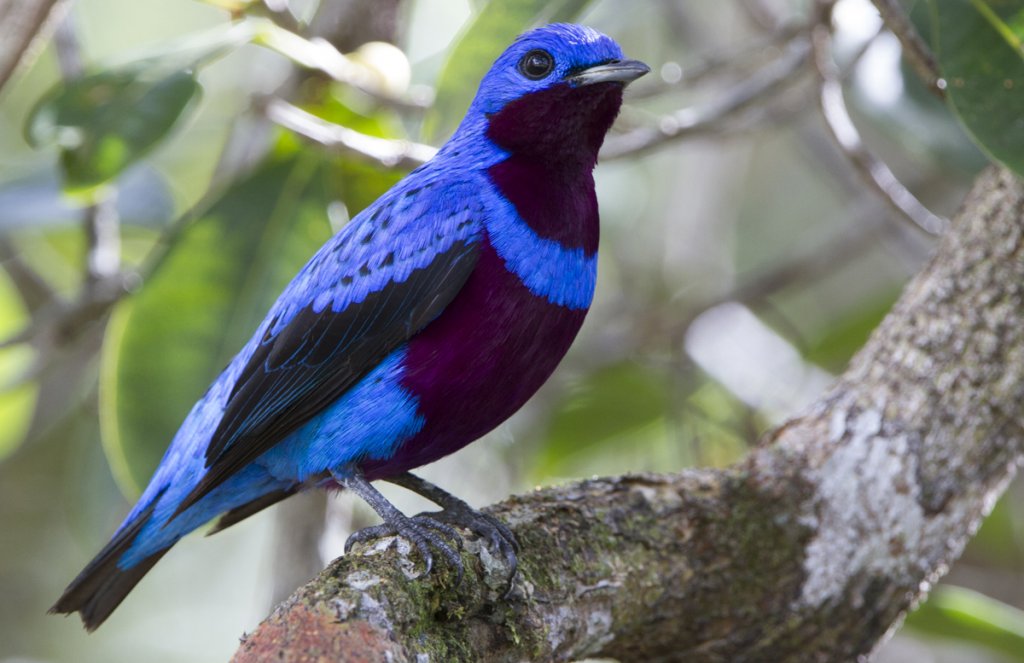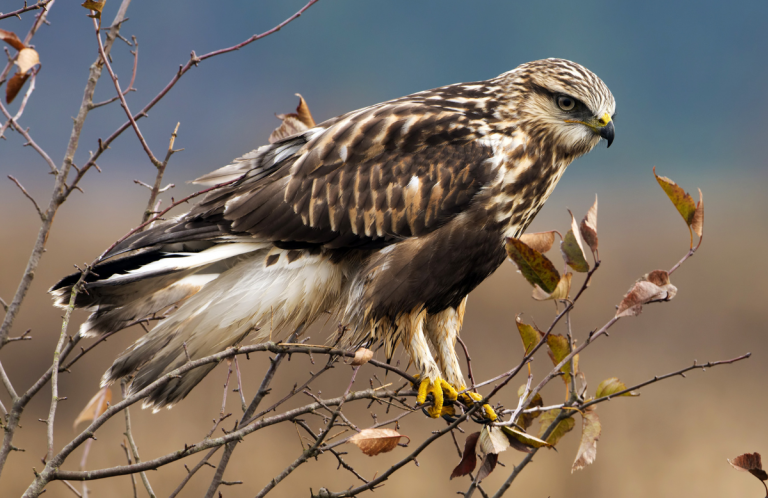 The male Banded Cotinga is a strikingly beautiful bird, decked out in shimmering shades of blue and purple. This scarce species is found only in the endangered Atlantic Forest ecosystem, which it shares with other Brazilian endemics such as the Saffron Toucanet and Pin-tailed Manakin.
The male Banded Cotinga is a strikingly beautiful bird, decked out in shimmering shades of blue and purple. This scarce species is found only in the endangered Atlantic Forest ecosystem, which it shares with other Brazilian endemics such as the Saffron Toucanet and Pin-tailed Manakin.
Like the Stresemann's Bristlefront, which also occurs in this quickly-disappearing habitat, the Banded Cotinga is a priority species for us, likely to become extinct without intensive conservation. The biggest threat to the Banded Cotinga is habitat loss.
Deforestation within this species' Atlantic Forest range has restricted populations to a few protected areas. Also contributing to this cotinga's decline are the collection of their feathers and capture for the cage-bird trade.
Cotingas: Shy American Specialty
Cotingas are an American specialty, found only in Central America and tropical South America. Like other cotingas such as the Hooded Berryeater, Banded Cotingas are shy, unobtrusive birds that dwell high in the forest canopy, where they feed on mainly on fruit, perhaps supplemented by seeds and insects.
Sign up for ABC's eNews to learn how you can help protect birds

Banded Cotinga by Ciro Albano
They are sexually dimorphic, meaning that males and females look different. The female is dusky brown and white, completely different from the male's stunning blue and purple plumage.
Males also have specially modified primaries (the biggest flight feathers) that produce a whirring sound when they display.
Advancing Cotinga Conservation
The Banded Cotinga can be found, along with the Stresemann's Bristlefront, at the Stresemann's Bristlefront Reserve, known as the Reserva Mata do Passarinho in Portuguese. This reserve was established in 2007 and is managed by ABC partner Fundação Biodiversitas. It currently covers 1,581 acres and protects one of the last patches of Atlantic forest in the region.
Other conservation measures to benefit this species include surveying areas of suitable habitat within its range to find additional populations, continuing to protect known territories, and reforesting adjacent areas with native trees.
Donate to support ABC's conservation mission!



















































